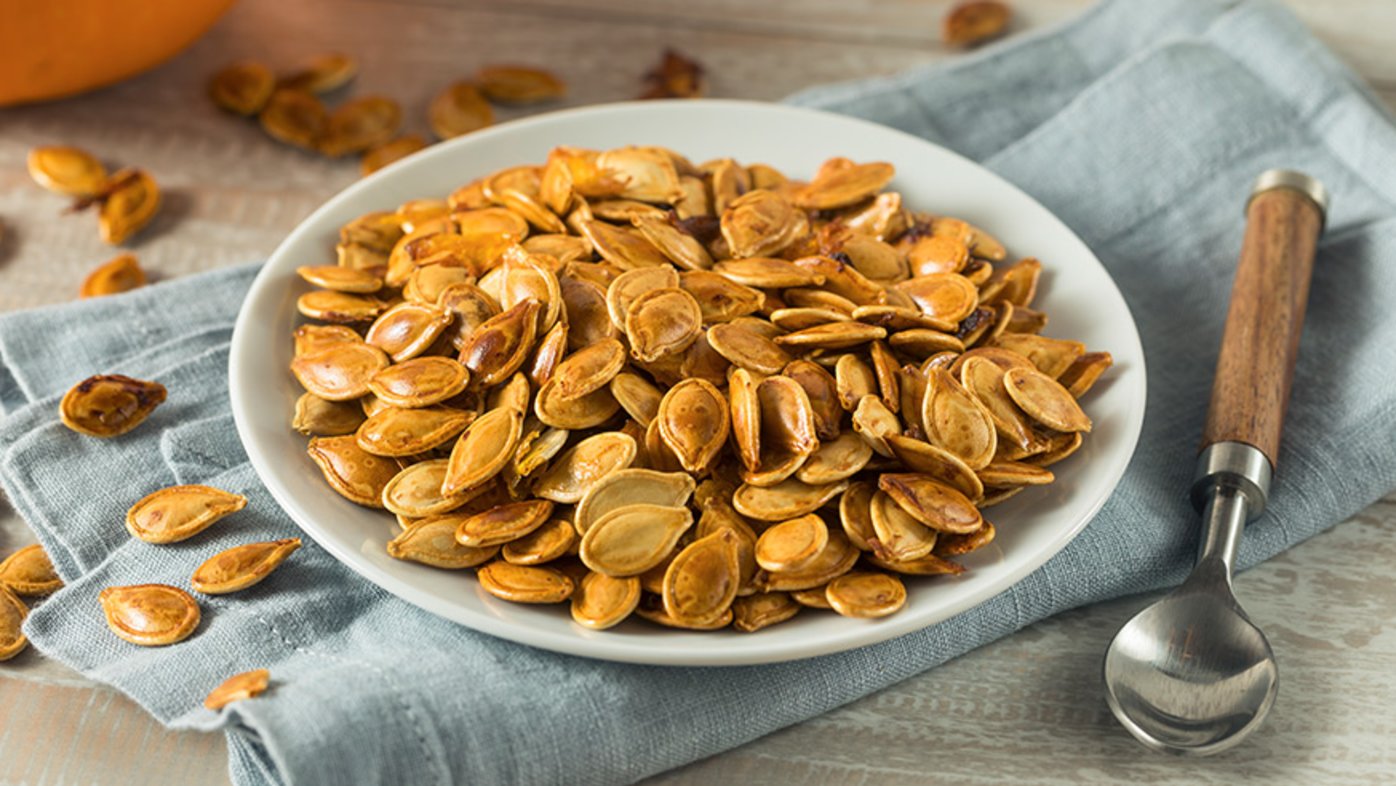
Health benefits of pumpkin seeds
Pumpkin seeds are loaded with the nutrients our bodies need.
Dining and snacking healthfully while traveling by plane can be challenging. Healthy grab-and-go options at the airport are often limited, and in-flight airline-issued snack packs and meals can be loaded with sodium and high in calories.
However, choosing healthy foods on the go doesn’t have to be impossible, says Erin Famulare, RDN, a wellness education specialist with Sharp Rees-Stealy Medical Center. She suggests the following tips for healthy eating when flying.
Plan ahead. The best way to ensure you’re eating a healthy diet while traveling is to plan ahead. Think about the time of day of your travels and determine which meals and snacks you'll need to arrange in advance. Ask yourself if there are opportunities to pack or purchase food.
For instance, if you will be traveling during your breakfast, morning snack and lunch, plan to make a smoothie and transport it in a travel thermos to drink right before you get in the security line. You can also pack an apple and almonds for a snack, and stop to eat lunch at the airport or a local café once you’ve landed.
Limit caffeine intake. When travel interrupts your preferred sleep routine, you may tend to overdo it with caffeinated beverages. Instead, have your typical amount of caffeine and then switch to low or no-calorie hydrating beverages for the rest of the travel day. You won't risk interrupting your sleep patterns for the following evening, and you’ll avoid the excess calories and sugar sometimes found in indulgent caffeinated drinks, such as sweetened lattes and sweet ice teas.
Pack compact grab-and-go foods. Throw a few protein bars into a bag before heading out for travel as a "just in case" option for when you’re in a pinch. You can also pack items such as nuts, jerky, dried cheese crisps, fruit and whole grain crackers.
Try to keep a regular eating schedule. You might be tempted to graze all day, especially when faced with unstructured meals and snacks while traveling. Try instead to assign approximate times for eating, even if you are changing time zones, to avoid accidentally overeating.
“While you can purchase snacks when traveling, packing your own healthy snacks can help you resist the temptation to buy something unhealthy at the airport,” says Famulare. “You can also guarantee something is tasty and satisfying.”
Healthy travel-friendly snacks that are also TSA approved include:
Nuun tabs. These electrolyte tablets come in a convenient container you can store in your travel bag, and they can easily be added to water for fizz, flavor and hydration. They are only 15 calories per tab and can help you avoid sugary beverages.
Protein bars. Bars are easy to pack and can help with sweet cravings while on the go. They are also portion controlled. Aim for protein bars with at least 10 grams of protein and 5 grams of fiber.
Unsalted mixed nuts. Nuts are a nutrient-rich, portable and nonperishable snack. They provide a boost of protein, healthy fat and fiber to help you feel satisfied. Try to avoid easy-to-overeat salty foods and consider putting nuts in a portion-controlled container or plastic bag to avoid overindulgence.
Fruit. Fruit is hydrating and nutrient-packed. Apples, pears, nectarines, clementines, berries and grapes are easy fruits to pack as a snack, but make sure they are protected from getting bruised and crushed in your bag.
Instant oatmeal packets. Oatmeal is filling and provides a good source of fiber. Ask a flight attendant for hot water and you’ll have an easy, healthy breakfast or snack.
“Just because it's a travel day, it doesn't give you a hall pass on making healthy food choices,” says Famulare. “Rather, do your best with the situation you have.”
Learn more about nutrition; get the latest health and wellness news, trends and patient stories from Sharp Health News; and subscribe to our weekly newsletter by clicking the "Sign up" link below.
Our weekly email brings you the latest health tips, recipes and stories.